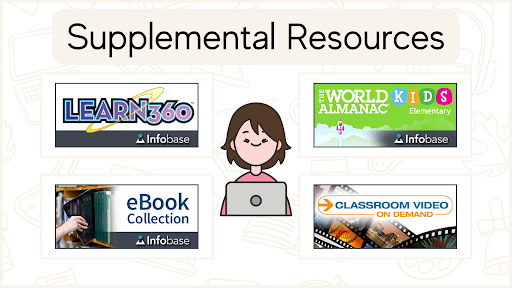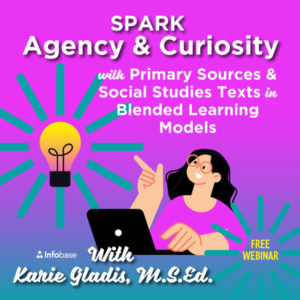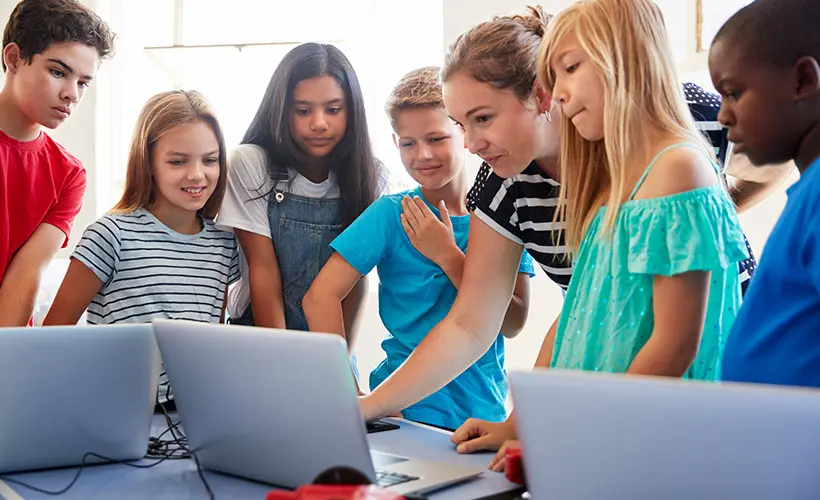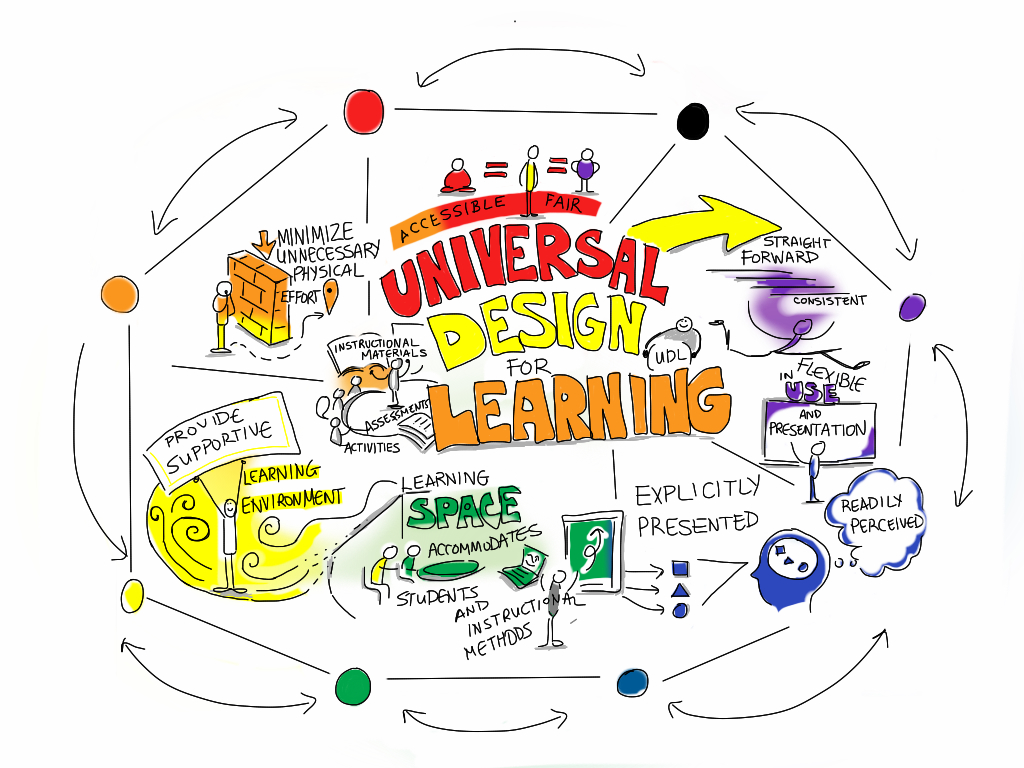Supplemental resources are such an invaluable tool for teachers. I’m talking about instructional materials that go beyond the regular required class materials, and for the most part, I’m talking about items that are not required. They are optional additional materials for students to extend their learning. Supplemental resources can include apps, websites, videos, software, or anything else you can find.
Infobase has tons to offer in the realm of supplemental resources, and if you haven’t already tried some of them out, I recommend taking a free trial!

Regardless of which supplemental resources you use, these amazing optional materials can:
- Engage students with the power of choice.
- Empower students to explore their interests.
- Elevate struggling students with additional support.
- Extend high-achieving students to new heights.

Table of Contents
Engage Students with the Power of Choice
Choice is a powerful instructional tool when wielded carefully. Instructional choice gives students the power to choose their own learning path, helping them to become independent and self-directed learners.
Often the materials that we have in the classroom can be quite limited. I remember how much my students tended to dislike the stories in our English textbook. Sometimes they were biased against anything in the textbook, but often the stories simply didn’t appeal to them. Supplemental resources gave them options to practice the same skills with stories that they choose. When they choose what they’re reading, they gain ownership of their learning.
Universal Design for Learning
When I think about implementing choice to engage students, my mind goes straight to Universal Design for Learning, developed by CAST. The goal of UDL is to break down barriers so ALL students can learn. Grounded in neuroscience and research, the UDL Guidelines are split into three principles, all of which focus on providing multiple means, or in other words, providing options. Providing multiple means of engagement creates purposeful and motivated students. Providing multiple means of representation creates resourceful and knowledgeable students. Providing multiple means of action and expression creates strategic and goal-directed learners. All of these can be accomplished using supplemental resources. If you’ve never heard of Universal Design for Learning, or if you just want to learn a bit more, I urge you to go directly to the CAST website and explore the full Guidelines.
Giving Students Choice
I’m sure at this point you’re asking, “How can I engage students with the power of choice?” I love choice assignments, and choice boards are a great strategy. The board can be filled with different types of activities: Watch a video, read an article, complete a worksheet, play an interactive learning game… the possibilities are endless. If I were teaching a lesson about figurative language, the choice board could have vocabulary activities with figurative language terms, examples for students to identify in poetry and fiction, worksheets for students to write their own examples, and even games to play. Each of these can be a supplemental resource. Most choice boards that I’ve seen look like a bingo board, and a great way to add an extra layer of fun can be offering a bonus challenge to complete a bingo pattern on the board! Students love a challenge, especially with a bonus point (or even candy!) reward.
 The biggest time suck in my classes used to be when some students were finished with their work but others were not. Of course, as soon as they believe they can put their heads down and take a nap when they finish an assignment, they would speed through the assignment to get that “free time.” Supplemental materials are great for providing learning activities that students can complete when they finish an assignment. When they know it’s not “free time” when they’re done, they tend to take longer on the assignment and perform better. When they are finished, they can engage in continued learning. Throw in educational games as an option, and they can learn while having fun!
The biggest time suck in my classes used to be when some students were finished with their work but others were not. Of course, as soon as they believe they can put their heads down and take a nap when they finish an assignment, they would speed through the assignment to get that “free time.” Supplemental materials are great for providing learning activities that students can complete when they finish an assignment. When they know it’s not “free time” when they’re done, they tend to take longer on the assignment and perform better. When they are finished, they can engage in continued learning. Throw in educational games as an option, and they can learn while having fun!
I love having Choice Fridays. My goal for these days was always to get students to complete their missing work, so I would start with all students logging into their student portal to check their grades. Their first priority was to complete any missing work, whether it was from an absence or just a bad day they had. Once they had addressed all of their zeros, they could then choose from several supplemental materials: learning games, eBooks, educational videos, or anything else they wanted that was on my approved list.
Finally, open projects are amazing! Students can demonstrate the necessary skills and concepts in whatever way they choose. This goes back to UDL’s options of expression; I allowed them to show what they learned in a format they were comfortable with: written report, video, slides, infographic, website, the list goes on. Supplemental materials can help students complete their projects, both by providing the information they need but also in showing them different ways that information can be presented.
I do have one caution when it comes to student choice. I’ve talked a lot about the endless possibilities, but giving students infinite choice is the same as giving them no choice at all. It’s always better to give students a set of specific options rather than a completely open free-for-all. Especially when it comes to choosing a topic for a project, I think we all know that students can take three days to just decide on their topic and leave themselves with no time to do the actual project. Give them boundaries in their topic choice and clear cut options for their activities.

Empower Students to Explore Their Interests
Connecting to students’ interests is a powerful tool. Supplemental resources can empower students to explore their interests even further.
Before I go on, I always have a little bit of hesitancy here. I personally believe that teaching requires a delicate balance between connecting learning to students’ interests and not putting on a whole dog and pony show to entertain students. We are educators, not entertainers. However, we know that tackling complex work can be less daunting if the topic interests them and if they have a voice in how they accomplish the task.
Supplemental resources and student choice are the perfect way to connect to students’ interests without feeling like we’re just entertaining students. I’m not going to design a whole lesson around vampires because one student is obsessed with Twilight, but they can read about vampires in pop culture, watch a video about the historical myths around vampires, or learn a list of vocabulary terms relating to vampires.
The key is to encourage their obsessions. I love teaching the middle grades because they’re so passionate about their interests. Sometimes they change day to day, and sometimes they stick around for years, but it’s so important for teachers to encourage those healthy obsessions and give them the space to explore and grow and learn. The great thing about students is it takes very little effort to let them explore their interests. They do a great job of it all on their own, but we can help them out by including a variety of interests in our supplemental resources.

Elevate Struggling Students with Additional Support
So far I’ve talked about ways to engage and empower students using supplemental resources. Now I’d like to shift gears and look a little more pedagogically at how these supplemental resources can elevate struggling students by providing additional support where they need it.
Response to Intervention, or RTI, is all about providing targeted, data-based instructional strategies to meet the needs of each learner and help to identify students who truly have a learning disability, rather than throwing that label on any student who struggles. RTI is a tiered approach that starts in the classroom with progress monitoring and support for all students. When I taught eighth grade, we gave frequent Common Formative Assessments, or CFAs, to track the progress of students. When we see students struggling on these CFAs, we jump in with interventions to help them develop the skills they need. This is where our supplemental resources come in. They can provide invaluable support to students who are struggling on classroom assessments. Students need repetition of instruction and repeated practice to master a skill, and often they need more than our classroom textbooks can offer. Supplemental resources can provide additional exposure and practice with these key concepts and skills.
Other times, students simply need to have a concept explained in a different way. One of the biggest benefits of utilizing supplemental resources is in the variety of modalities and media available. If a student struggles after a class lesson, they can watch a video or look at an infographic to see the same information presented in a different way. Resources like Learn360 provide videos, worksheets, audiobooks, speeches, images, articles, fact sheets, maps, diagrams, and the list goes on. Creating a set of different types of resources all around the same concept or skill is a great first intervention with a struggling student.
There has been a lot of research to debunk the idea of students having different learning styles (auditory, visual, or kinesthetic), but there is also research that shows that providing information in multiple modalities engages different parts of the brain and helps students develop a deeper understanding. In fact, this goes back to Universal Design for Learning, specifically providing multiple means of representation, or the way we present the concepts to students.

Extend High-Achieving Students to New Heights
And finally, our high-achieving students. Supplemental resources can take on-level lessons to new heights by creating connections outside of the textbook. This is actually a strategy that I stole from my husband, because what are teachers if not pedagogical thieves? He’s also an English teacher, and he suggests giving on-level students an activity using a passage from the textbook while giving high-achieving students who need to be pushed beyond the grade level textbook the same activity using an outside resource to increase the rigor.
Supplemental resources are wonderful for their cross-curricular possibilities. This is especially great for students who are high-achieving in your content area but maybe struggling in another content area. Outside resources can help to create connections between content areas, strengthening a student’s learning in both areas.
Finally, an amazing way to engage and extend high-achieving students is in allowing them to create activities. One tried and true way to better understand a concept is to teach it. In creating a new activity, students need to do some research on the topic, locate or create from scratch a relevant activity, and put together instructions for their peers. This is yet another way to push students to take ownership of their learning and the learning of their classmates. In addition to the content, they’re gaining responsibility and teaching skills.
See also:




